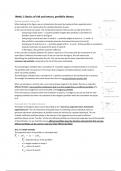Samenvatting
Samenvatting - Advanced Investments
- Instelling
- Erasmus Universiteit Rotterdam (EUR)
Complete summary of all lectures and research papers of the course "Advanced Investments", which is part of the master Financial Economics at the Erasmus University Rotterdam
[Meer zien]




